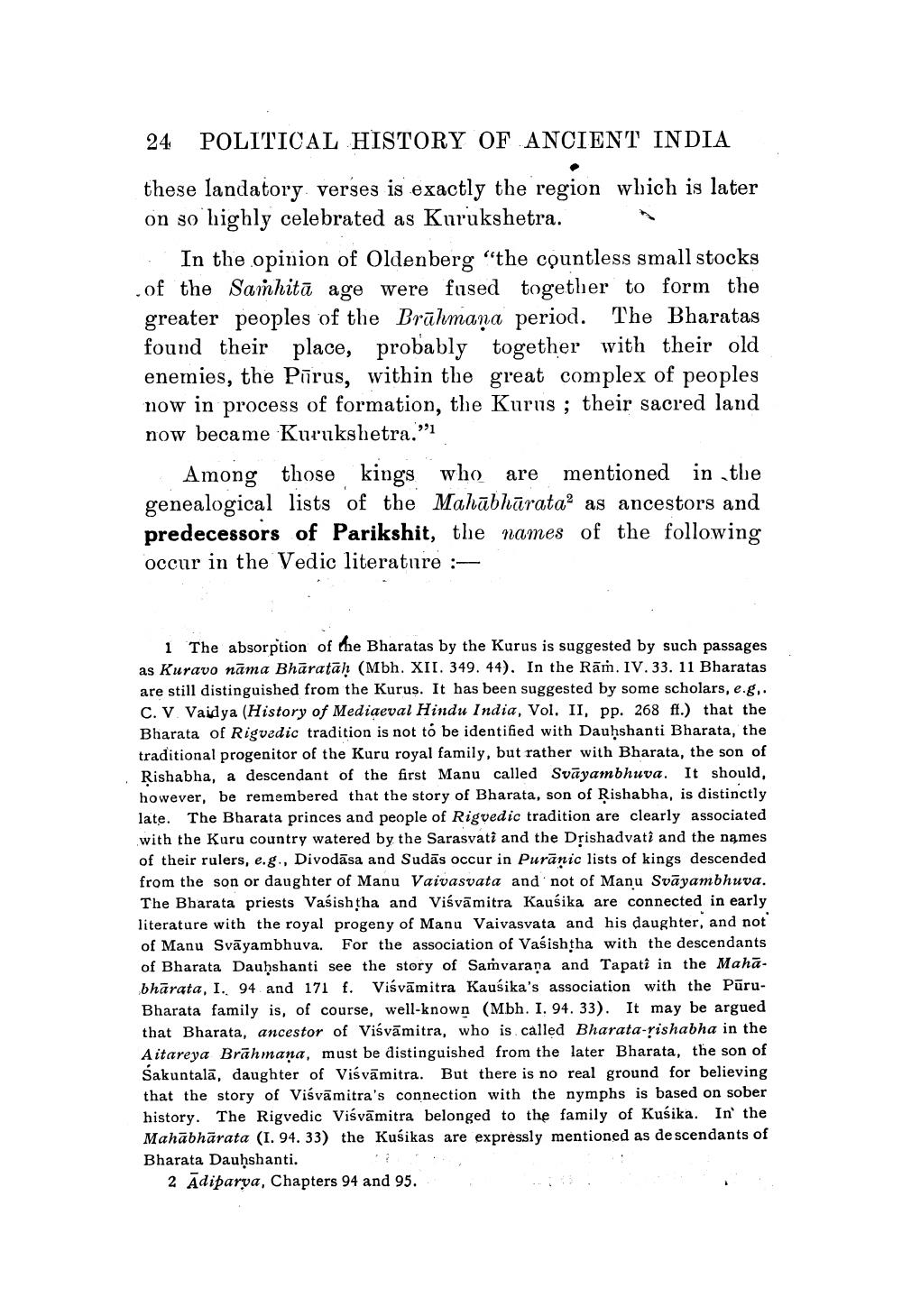________________
24 POLITICAL HISTORY OF ANCIENT INDIA these landatory verses is exactly the region which is later on so highly celebrated as Kurukshetra. . In the opinion of Oldenberg “the countless small stocks of the Sainhitā age were fused together to form the greater peoples of the Brāhmana period. The Bharatas found their place, probably together with their old enemies, the Pūrus, within the great complex of peoples now in process of formation, the Kurus ; their sacred land now became Kurukshetra."!
Among those kings who are mentioned in the genealogical lists of the Mahābhārata as ancestors and predecessors of Parikshit, the names of the following occur in the Vedic literature :
1 The absorption of the Bharatas by the Kurus is suggested by such passages as Kuravo nāma Bhāratah (Mbh. XII. 349. 44). In the Rām. IV.33. 11 Bharatas are still distinguished from the Kurus. It has been suggested by some scholars, e.g.. C. V. Vaidya (History of Mediaeval Hindu India, Vol. II, pp. 268 ff.) that the Bharata of Rigvedic tradition is not to be identified with Dauḥshanti Bharata, the traditional progenitor of the Kuru royal family, but rather with Bharata, the son of Rishabha, a descendant of the first Manu called Svāyambhuva. It should, however, be remembered that the story of Bharata, son of Rishabha, is distinctly late. The Bharata princes and people of Rigvedic tradition are clearly associated with the Kuru country watered by the Sarasvati and the Drishadvati and the names of their rulers, e.g., Divodāsa and Sudās occur in Purānic lists of kings descended from the son or daughter of Manu Vaivasvata and not of Manu Svāyambhuva. The Bharata priests Vaśishtha and Viśvāmitra Kausika are connected in early literature with the royal progeny of Manu Vaivasvata and his daughter, and not of Manu Svāyambhuva. For the association of Vaśishtha with the descendants of Bharata Dauḥshanti see the story of Samvarana and Tapati in the Mahābhārata, I. 94 and 171 f. Viśvāmitra Kausika's association with the PūruBharata family is, of course, well-known (Mbh. I. 94. 33). It may be argued that Bharata, ancestor of Viśvāmitra, who is called Bharata-rishabha in the Aitareya Brāhmaṇa, must be distinguished from the later Bharata, the son of Sakuntalā, daughter of Viśvāmitra. But there is no real ground for believing that the story of Viśvā mitra's connection with the nymphs is based on sober history. The Rigvedic Viśvāmitra belonged to the family of Kuśika. In the Mahābhārata (I. 94.33) the Kuśikas are expressly mentioned as descendants of Bharata Dauhshanti.
2 Adiparya, Chapters 94 and 95.




